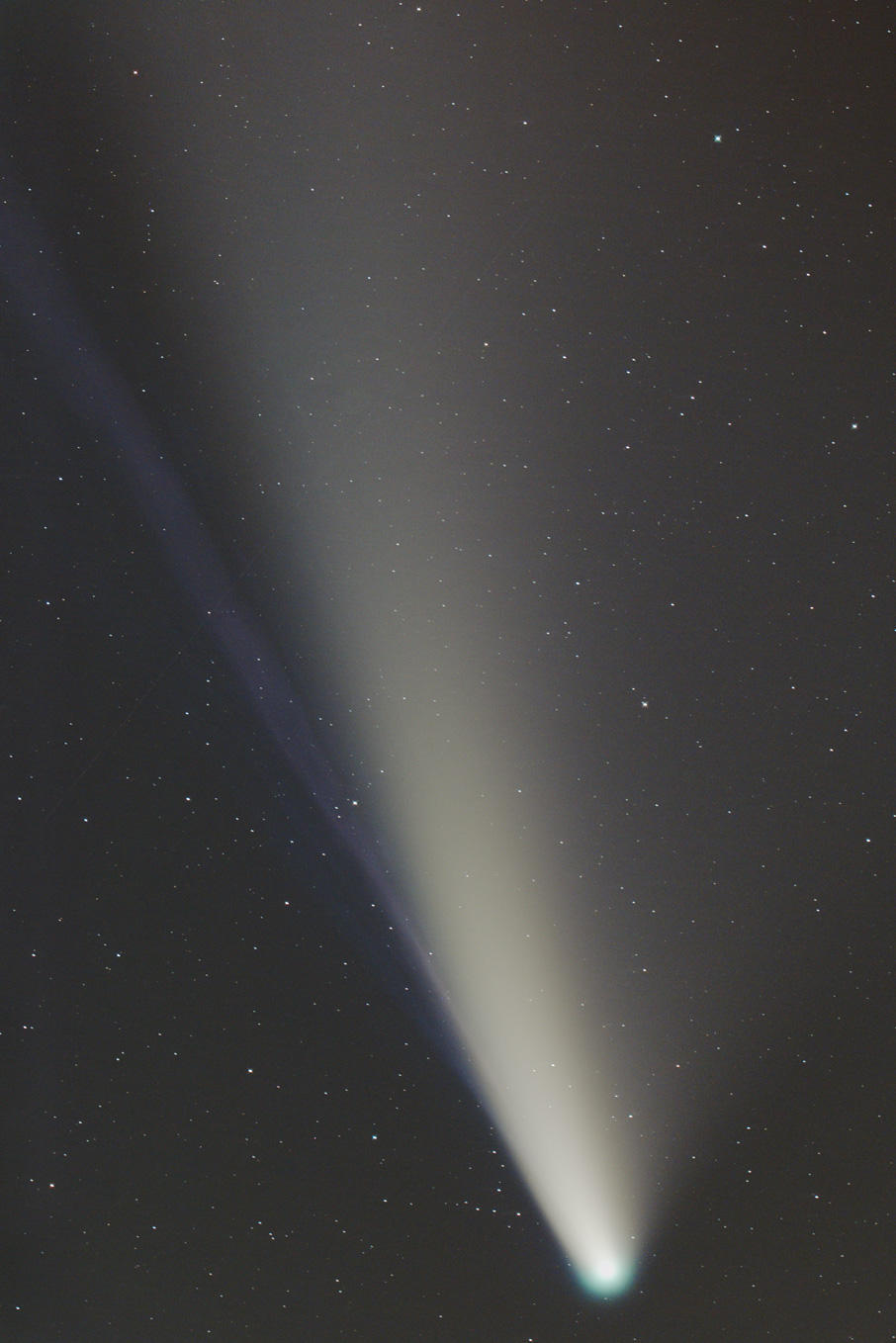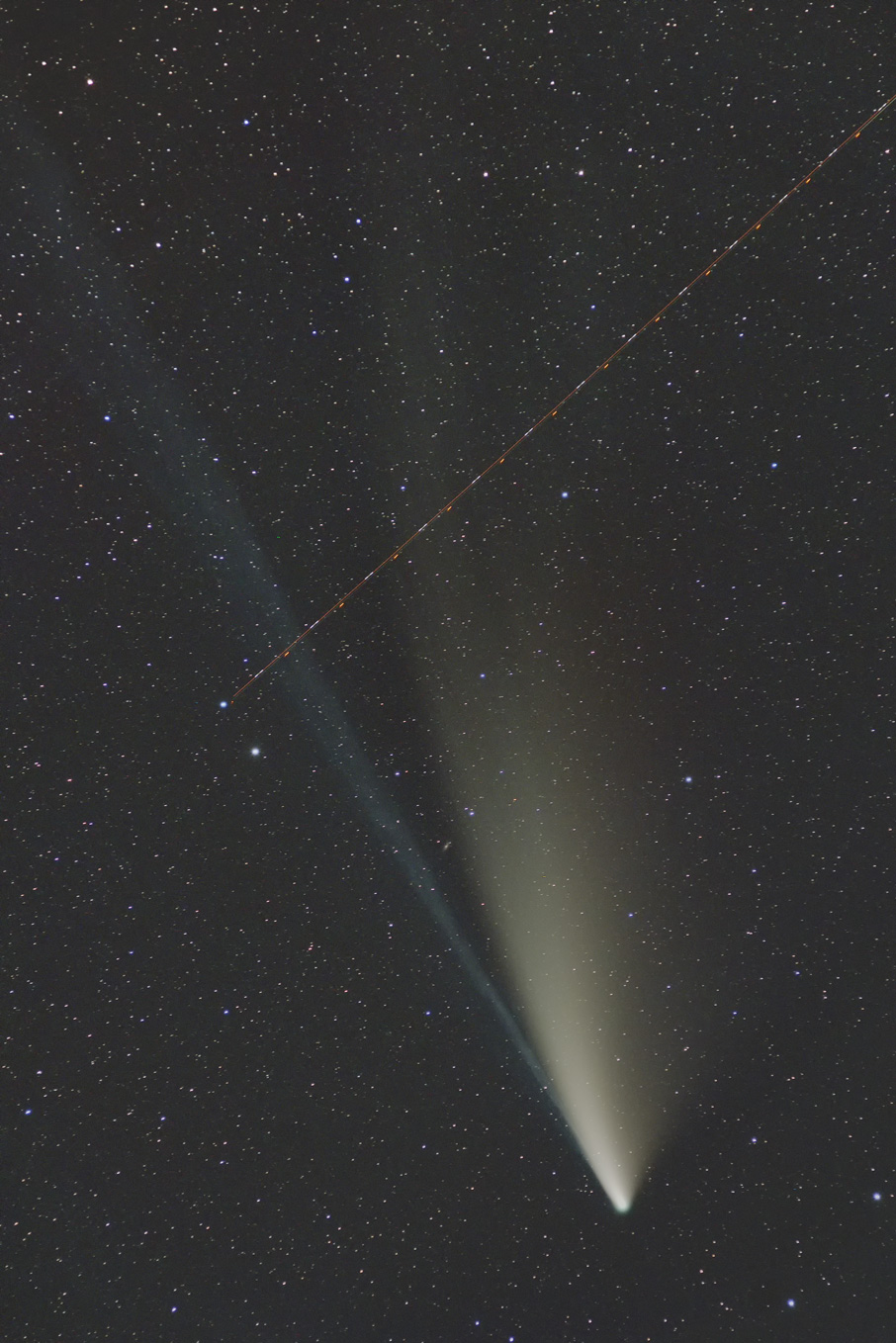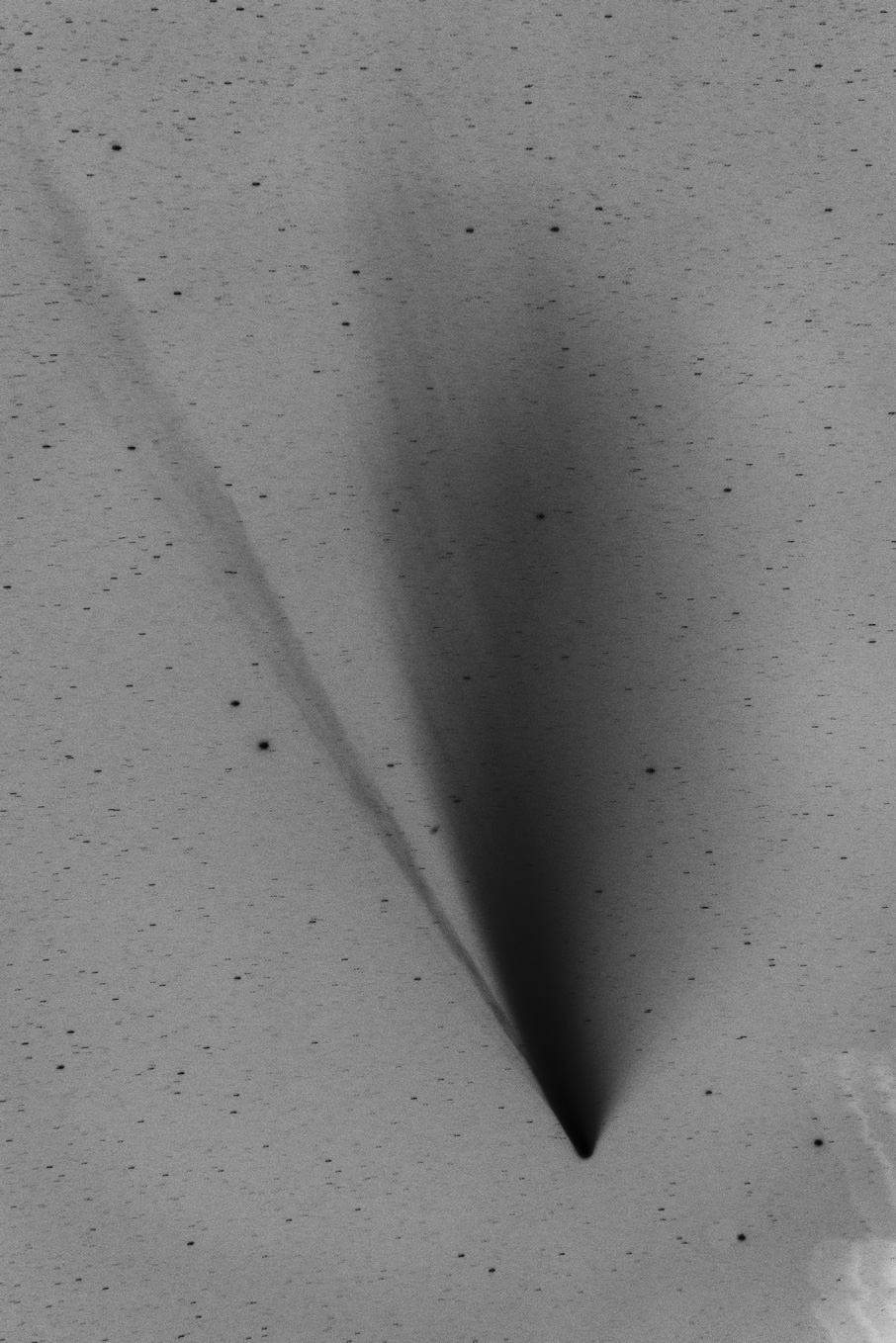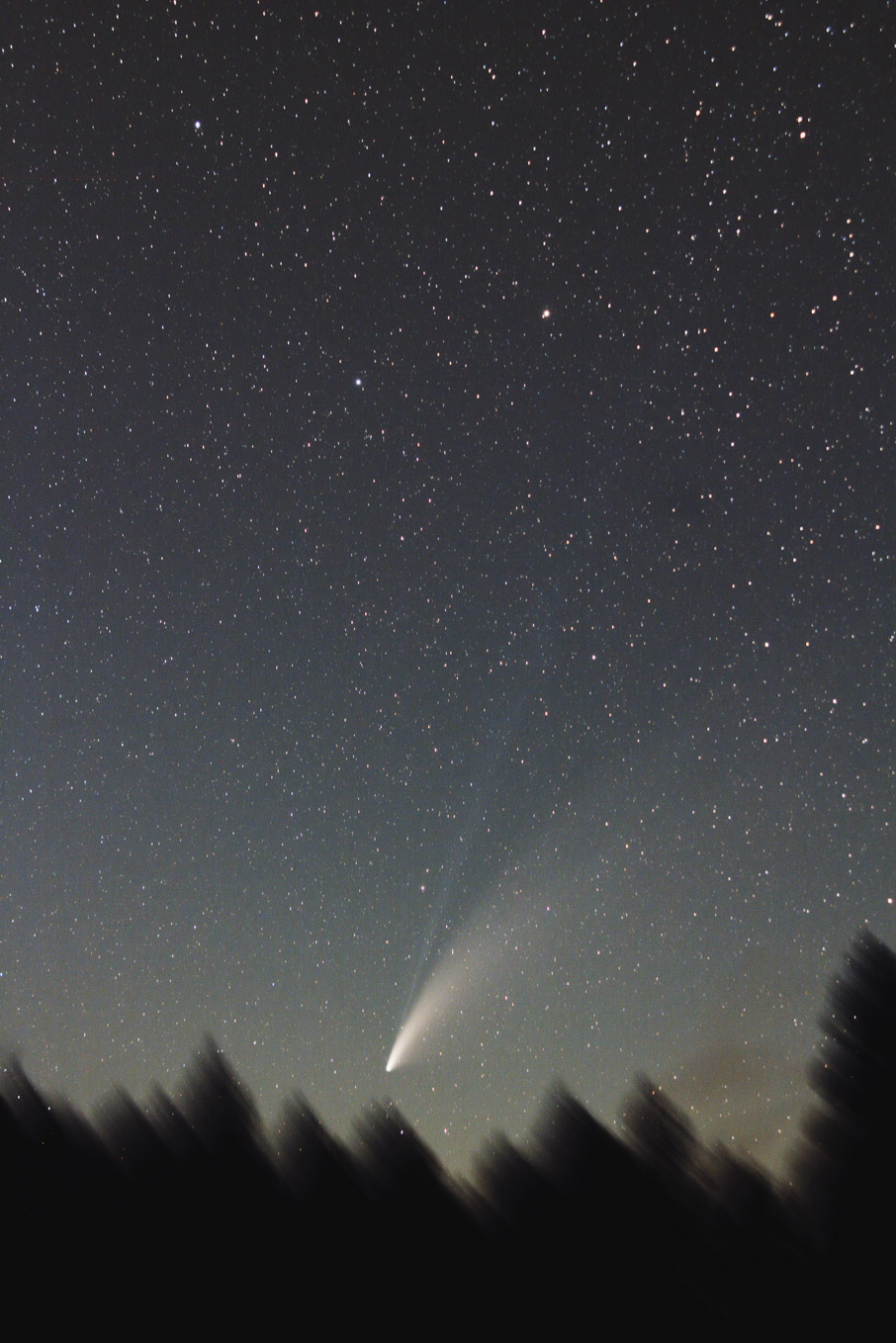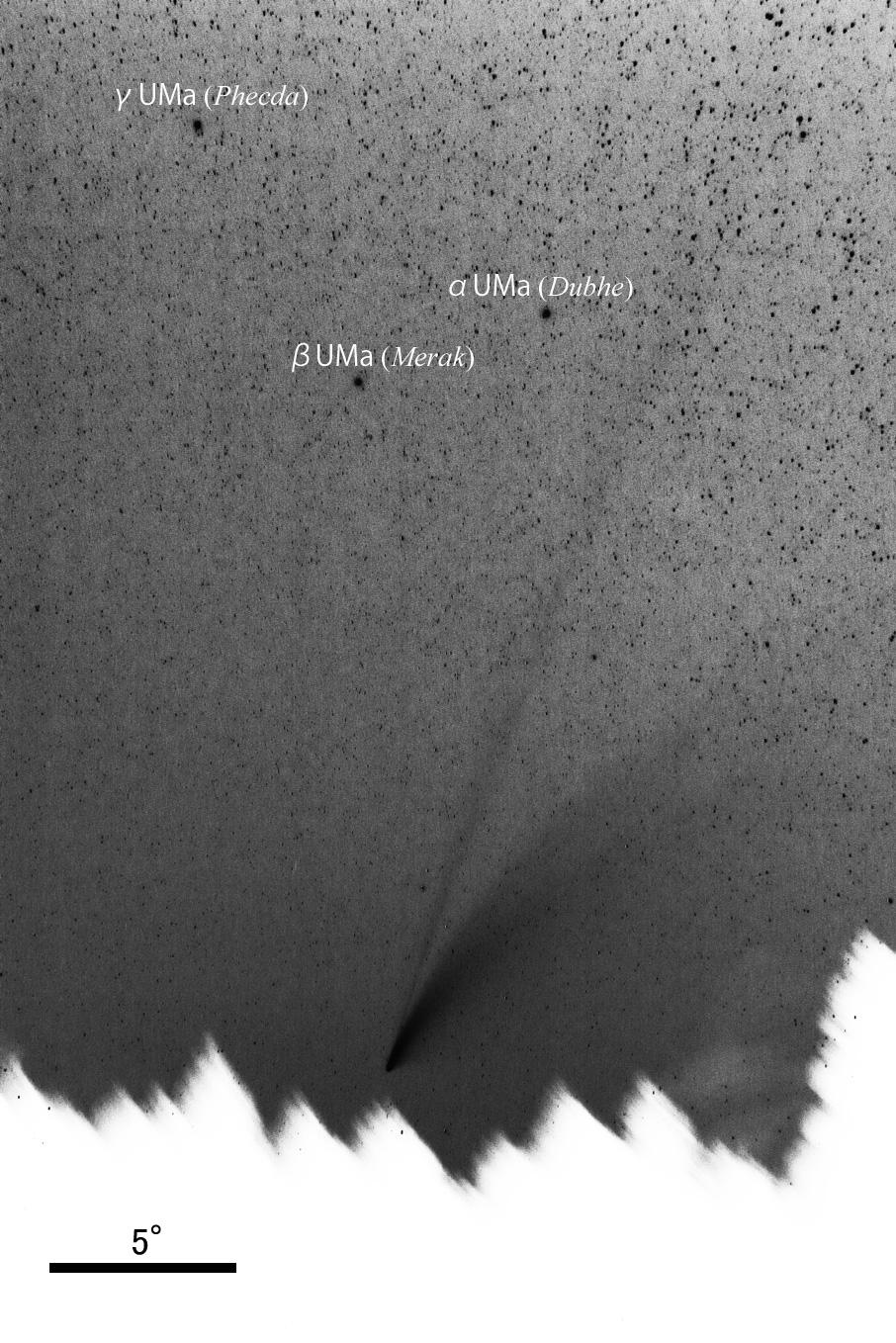Comet 2020F3 NEOWISE on Jul 19, 2020
Click on image to enlarge
| Date & Time: | Jul 19 2020, from 20:27 to 20:50 JST(+0900) |
| Composed 12 shots with 2 minutes exposed |
| 2-min. exposed background image taken at 20:42 composed |
| Optical: | TAKAHASHI 16cm(6.3") epsilon (f=530mm, F3.3) |
| with IDAS LPS-D1 Light-pollution suppression filter |
| Auto-guided with TAKAHASHI EM-200 Equatorial |
| Digital Camera: | Canon EOS 6D (Remodeled) |
| Location: | Hitachi-oota city, Ibaraki pref. |
| Camera Settings: | Recording Format...14bit CCD-RAW, converted to 16bit TIFF(5472×3648) |
| Device Size...36×24mm, Sensitivity...ISO1600 |
Click on image to enlarge
Comet NEOWISE with telephoto lens (Synchronic Band)
| Date & Time: | (Left) Jul 19 2020, from 20:14 to 20:19 JST(+0900), 1min.×5shots |
| (Right) Jul 19 2020, from 20:29 to 20:48 JST(+0900), 2min.×9shots |
| Optical: | AF zoom-Nikkor 80-200mm F2.8 (f=135mm, stop: F4.0) |
| with Kenko Starry-Night filter |
| Auto-guided with TAKAHASHI EM-200 Equatorial |
| Digital Camera: | Nikon D810A |
| Location: | Hitachi-oota city, Ibaraki pref. |
| Camera Settings: | Recording Format...14bit CCD-RAW, converted to 16bit TIFF(7360×4912) |
| Device Size...FX format(36×24mm) |
| Sensitivity...ISO1600, White Balance...Daylight |
Click on image to enlarge
Setting comet NEOWISE beyond forest (with 35mm wide-field)
| Date & Time: | Jul 19 2020, from 20:41 to 20:49 JST(+0900) |
| Composed 3 shots with 4 minutes exposed |
| Optical: | AF zoom-Nikkor 24-85mm (f=35mm, stop: F4.0) |
| with Kenko Starry-Night filter |
| Auto-guided with EYEBELL CD-1 portable Equatorial |
| Digital Camera: | Canon EOS 550D (Remodeled) |
| Location: | Hitachi-oota city, Ibaraki pref. |
| Camera Settings: | Recording Format...14bit CCD-RAW, converted to 16bit TIFF(5184×3456) |
| Sensitivity...ISO800 |
I captured the naked-eye comet of C/2020F3 NEOWISE, reached the 1st magnitude in the beginning of July 2020, in evening lower northwest skies of a break in the Japanese rainy season.
In that day the comet positioned at about 20 degrees southwest of α-UMa (Dubhe) forming the Big Dipper and had a coma brightness of the 2nd magnitude.
I could detect the comet easily with naked eyes. Images in this page show you that the comet has a fan-shaped whitish dust tail and a bluish streak ion tail stretched in north and NNE directions, respectively.
The apparent length of ion tail can be estimated as over 20 degrees. The figure of comet NEOWISE is reminiscent of the comet Hale-Bopp (C/1995O1) that approached to the Earth 23 years ago.
More, a reversed and emphasized image taken with a telephoto lens shows that the dust tail has several stripe structures; it's known that the unique pattern can be observed in some large-scaled comets called as the "Synchronic Band".
From now on, we can chase the great comet after a long time getting dimmer in higher evening skies under good conditions.
Among three images in this page, the first two and the last one have been displayed by turning the celestial north and the zenith directions upward, respectively.
1st image has been cropped with an equivalent focal length of 700mm: View angle: 1.95×2.92°
2nd image has been cropped with an equivalent focal length of 180mm: View angle: 7.62×11.3°
3rd image: View angle: 24×35.3°
